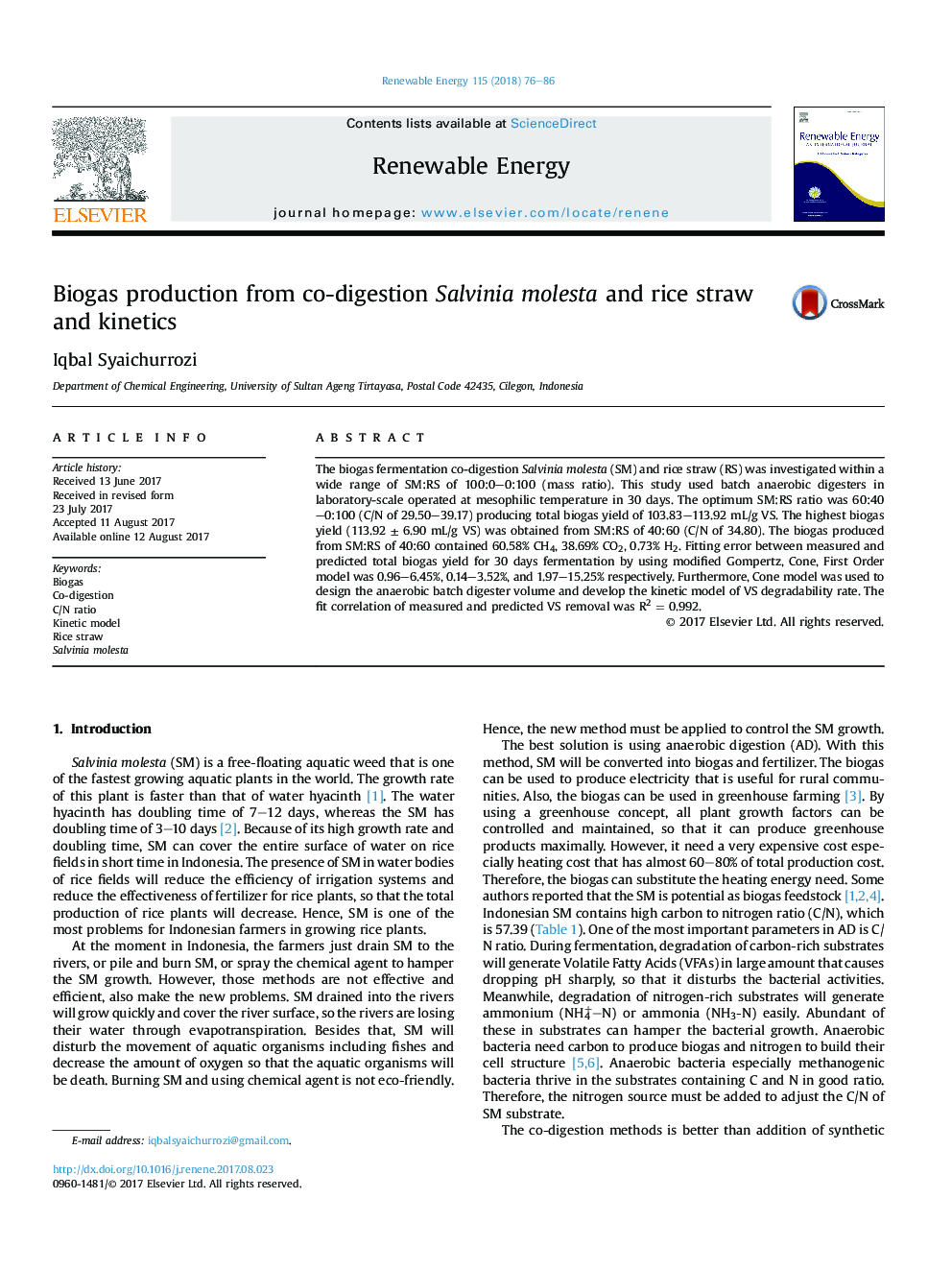| Article ID | Journal | Published Year | Pages | File Type |
|---|---|---|---|---|
| 4925989 | Renewable Energy | 2018 | 11 Pages |
â¢Co-digestion of Salvinia molesta (SM) and rice straw (RS) was studied.â¢The combination of SM:RS ratio affected the difference of C/N in the substrates.â¢The optimum range of SM:RS ratio was 60:40-0:100 having C/N of 29.50-39.17.â¢The modified Gompertz and Cone model were more suitable than first order kinetic.â¢Cone equation was used to develop the kinetic model of VS degradability.
The biogas fermentation co-digestion Salvinia molesta (SM) and rice straw (RS) was investigated within a wide range of SM:RS of 100:0-0:100 (mass ratio). This study used batch anaerobic digesters in laboratory-scale operated at mesophilic temperature in 30 days. The optimum SM:RS ratio was 60:40-0:100 (C/N of 29.50-39.17) producing total biogas yield of 103.83-113.92 mL/g VS. The highest biogas yield (113.92 ± 6.90 mL/g VS) was obtained from SM:RS of 40:60 (C/N of 34.80). The biogas produced from SM:RS of 40:60 contained 60.58% CH4, 38.69% CO2, 0.73% H2. Fitting error between measured and predicted total biogas yield for 30 days fermentation by using modified Gompertz, Cone, First Order model was 0.96-6.45%, 0.14-3.52%, and 1.97-15.25% respectively. Furthermore, Cone model was used to design the anaerobic batch digester volume and develop the kinetic model of VS degradability rate. The fit correlation of measured and predicted VS removal was R2 = 0.992.
